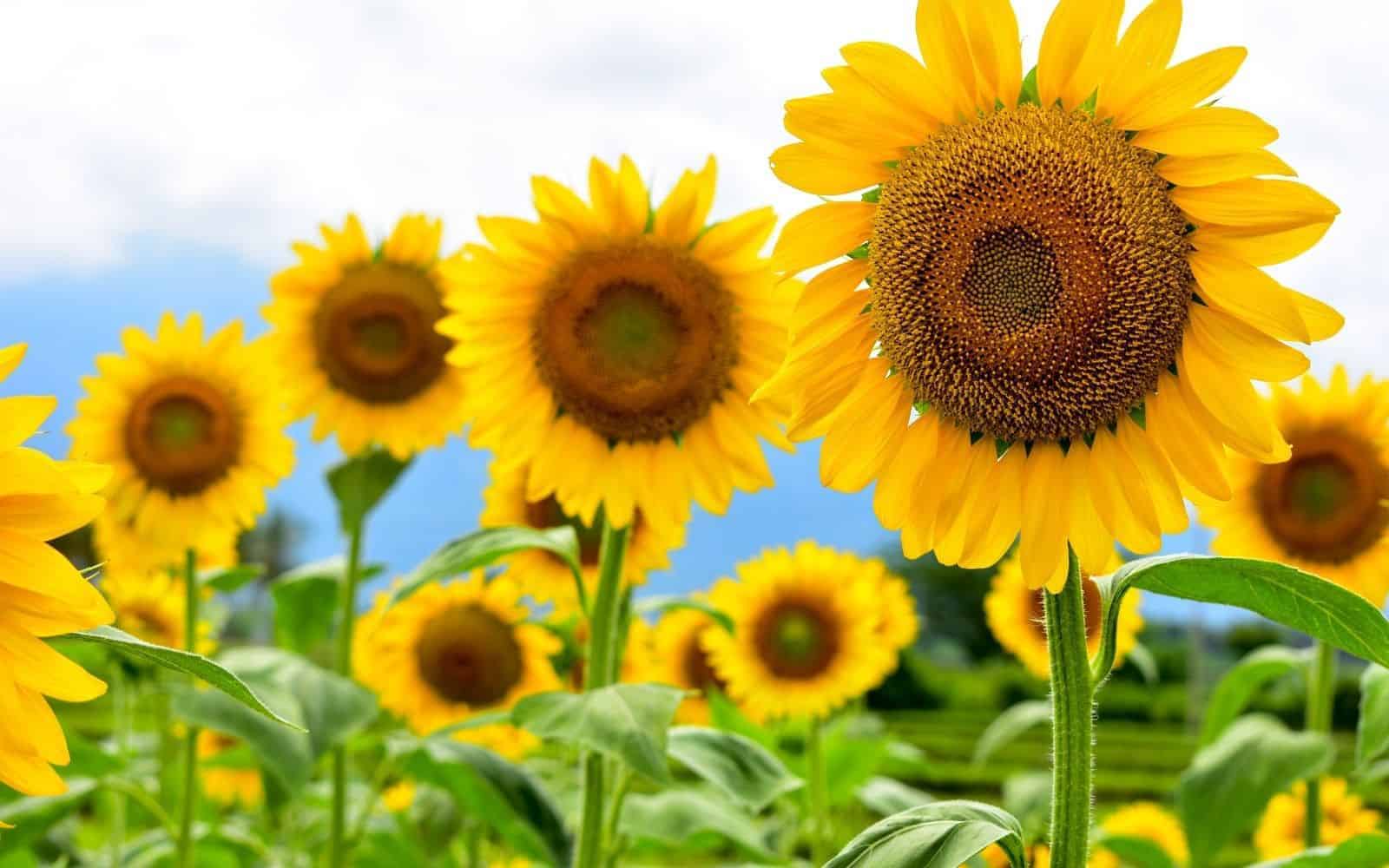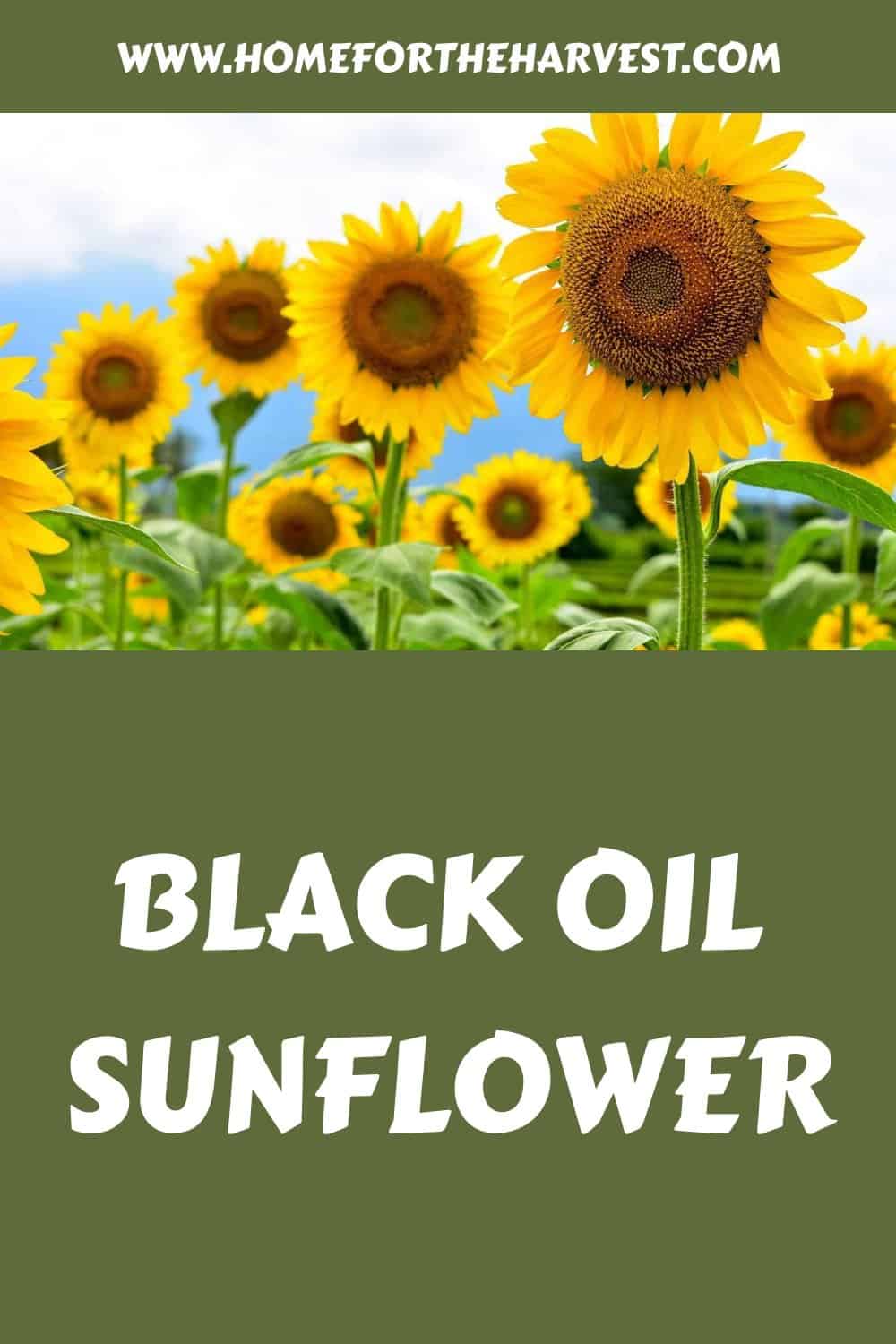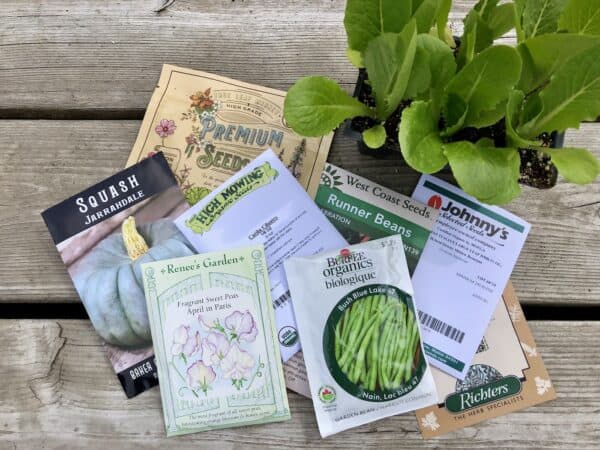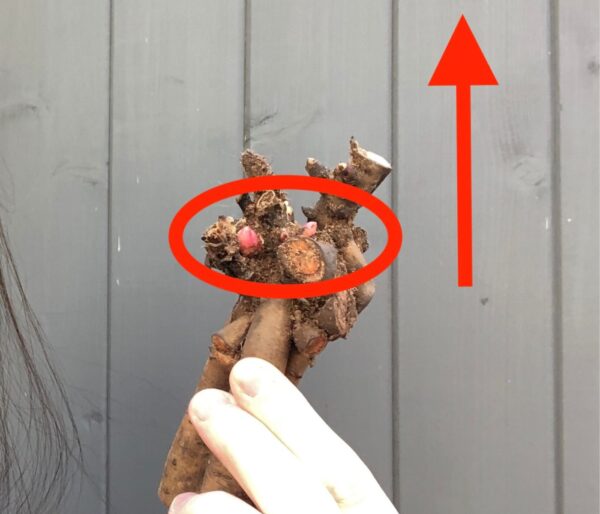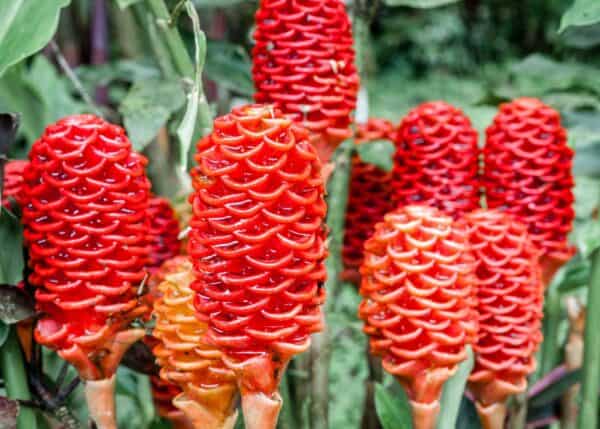The Black Oil sunflower is an heirloom cultivar known for its high-quality seeds that are used for oil and bird feed. These plants bloom during the summer months and stay for three weeks. Choose a sunny spot for planting, give the plant one inch of water per week, and keep weeds down. Black Oil sunflowers are easy to grow and perfect for pollinators and wildlife gardens.
Black Oil sunflower basics
The Black Oil sunflower is one of the most popular sunflower varieties in the world. Black Oil sunflowers are grown by home gardeners to attract birds and simply as an attractive and easy-to-grow flower for your yard. Commercially, they are grown to produce sunflower oil. This heirloom cultivar has been used to breed many modern sunflower oil production cultivars of sunflower plants.
Black Oil sunflowers look just like any other classic sunflower. They have bright yellow petals that surround a brown center. The difference in color is their seed. Most sunflower seeds are brown/grey (and sometimes striped). However, a Black Oil sunflower seed is coal black. The mature flowers have a striking color contrast between the petals and black oil seeds.
Black Oil sunflowers produce one flower, meaning they are not branching. They only produce one beautiful flower per stalk. The flower itself is usually about twelve inches across.
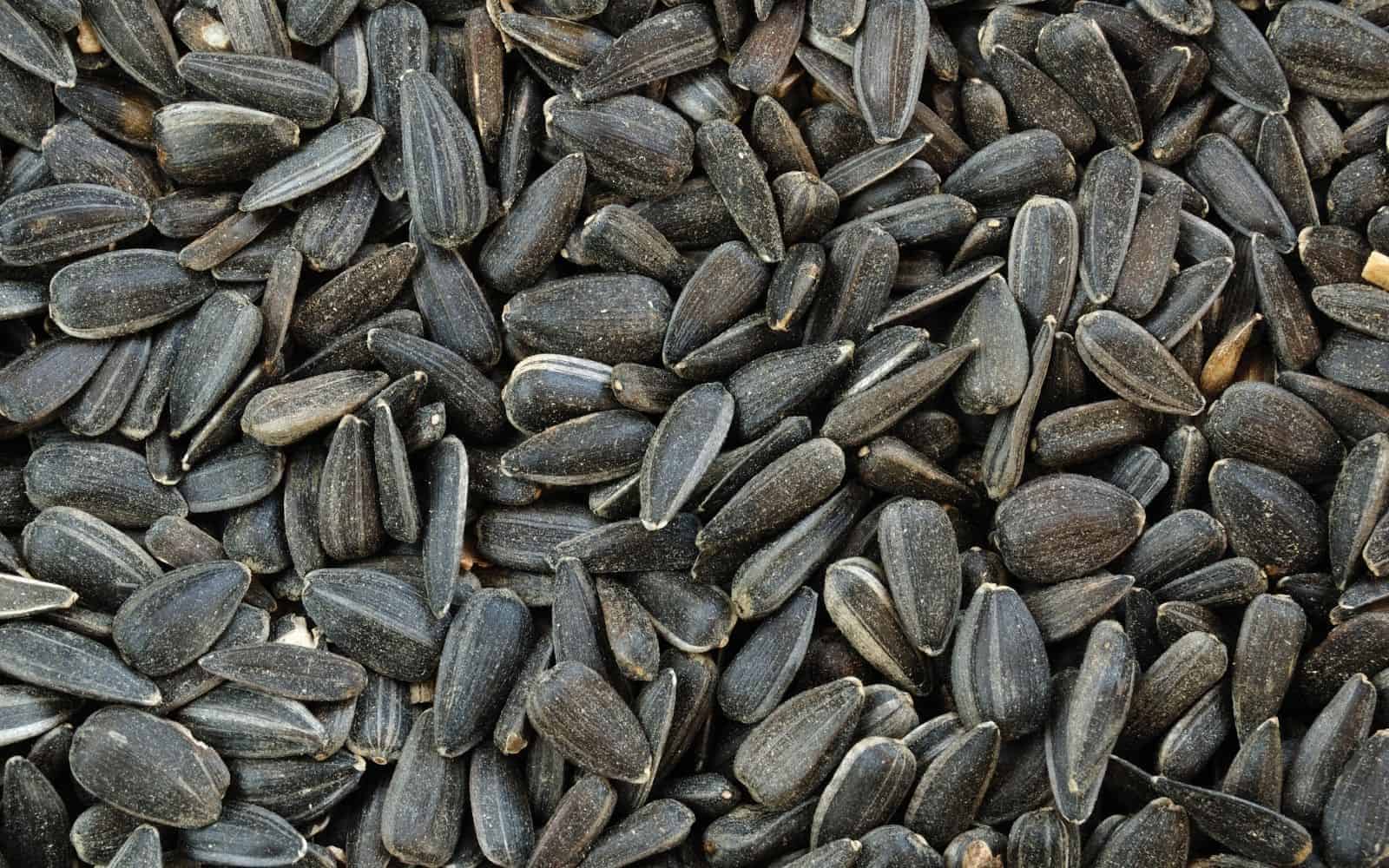
One of the largest reasons black oil sunflowers are well known is because of their seeds. A black oil sunflower seed has a large amount of oil in it, especially compared to other sunflower seeds. They have a high oil concentration and ample amounts of protein.
While a black oil sunflower seed is edible, you will want to wash them first. These seeds are not commonly used for human consumption, so they are not typically packaged in a way that is safe for people to eat.
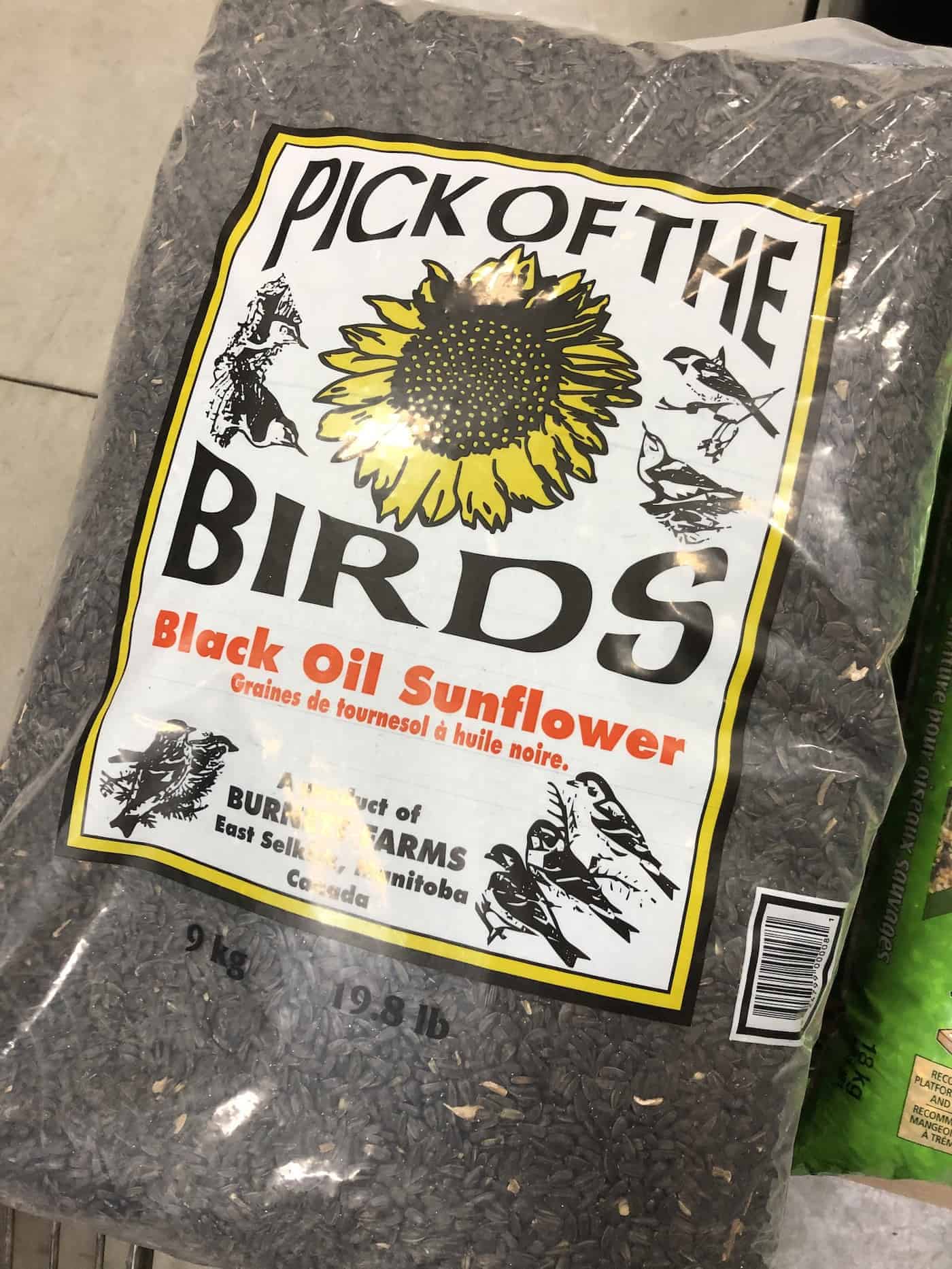
Reasons to grow Black Oil sunflowers
Black Oil sunflowers are often planted like florist sunflowers in the landscape, particularly if the flowers are to be left on the stalk to mature rather than cutting them and bringing them indoors for bouquets. This makes them great for photo backdrops in the early fall. You can also use them for other applications, like a sunflower maze.
The second reason to grow Black Oil sunflowers is for their seeds. These seeds are commonly used to feed wild birds and to feed backyard chickens, as they provide lots of valuable nutrients. They can improve the health of songbirds and your poultry as they are high in protein and have been shown to increase weight.
Black Oil Sunflower plants are often planted to purify the soil. These sunflowers dig their roots deep into the ground. They are able to pull nutrients and soil contaminants toward the surface, creating a better-growing environment for everything around them.
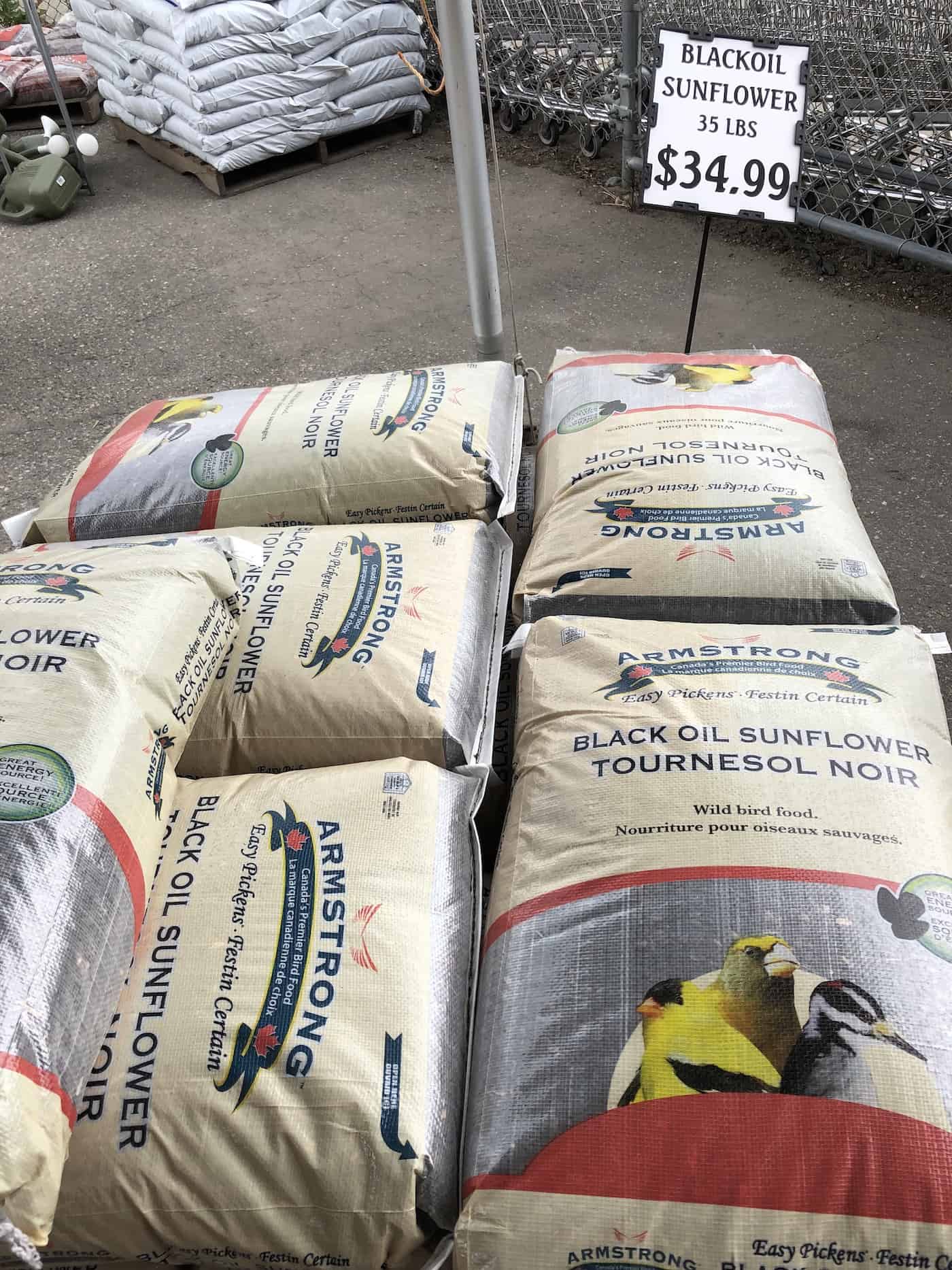
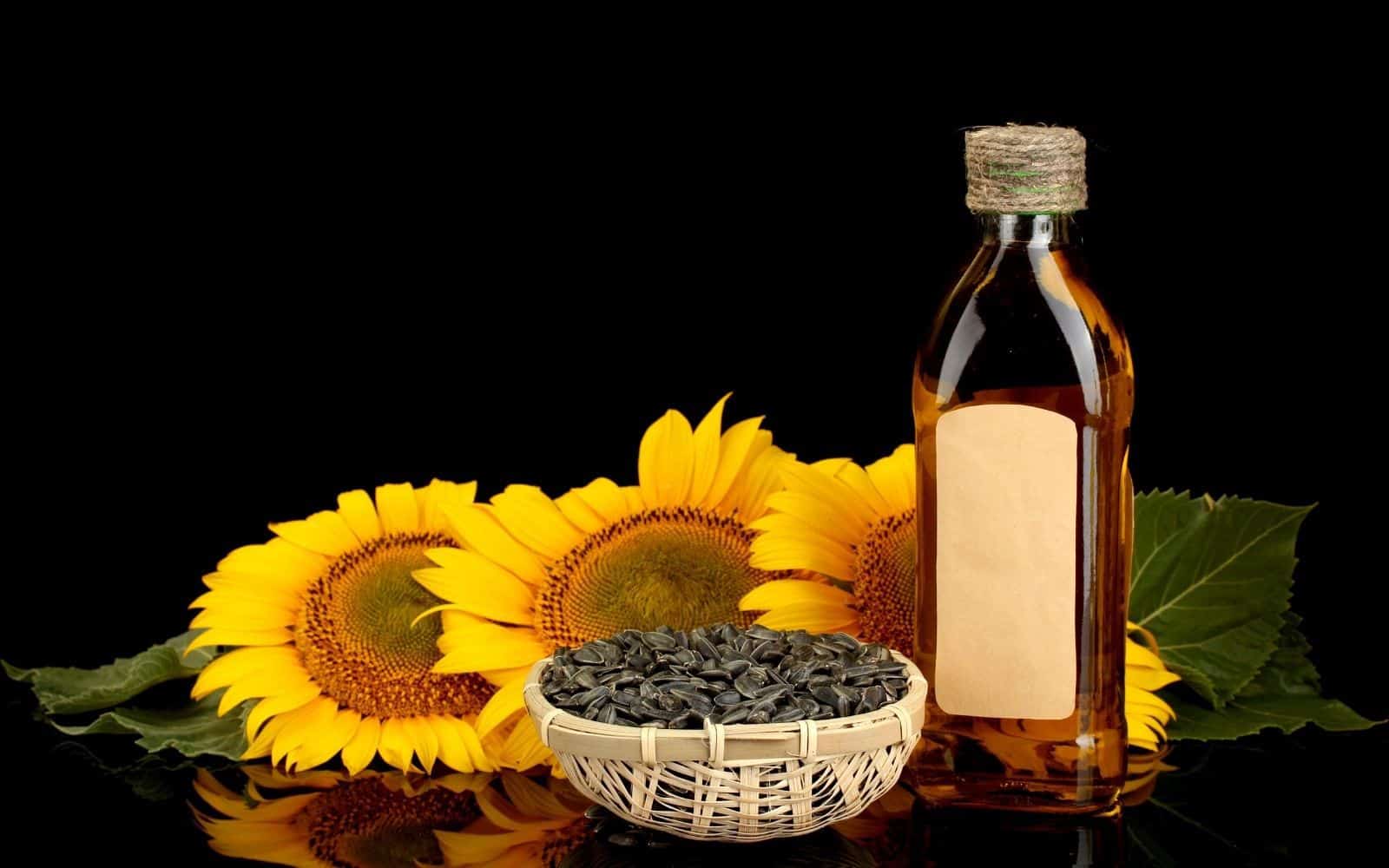
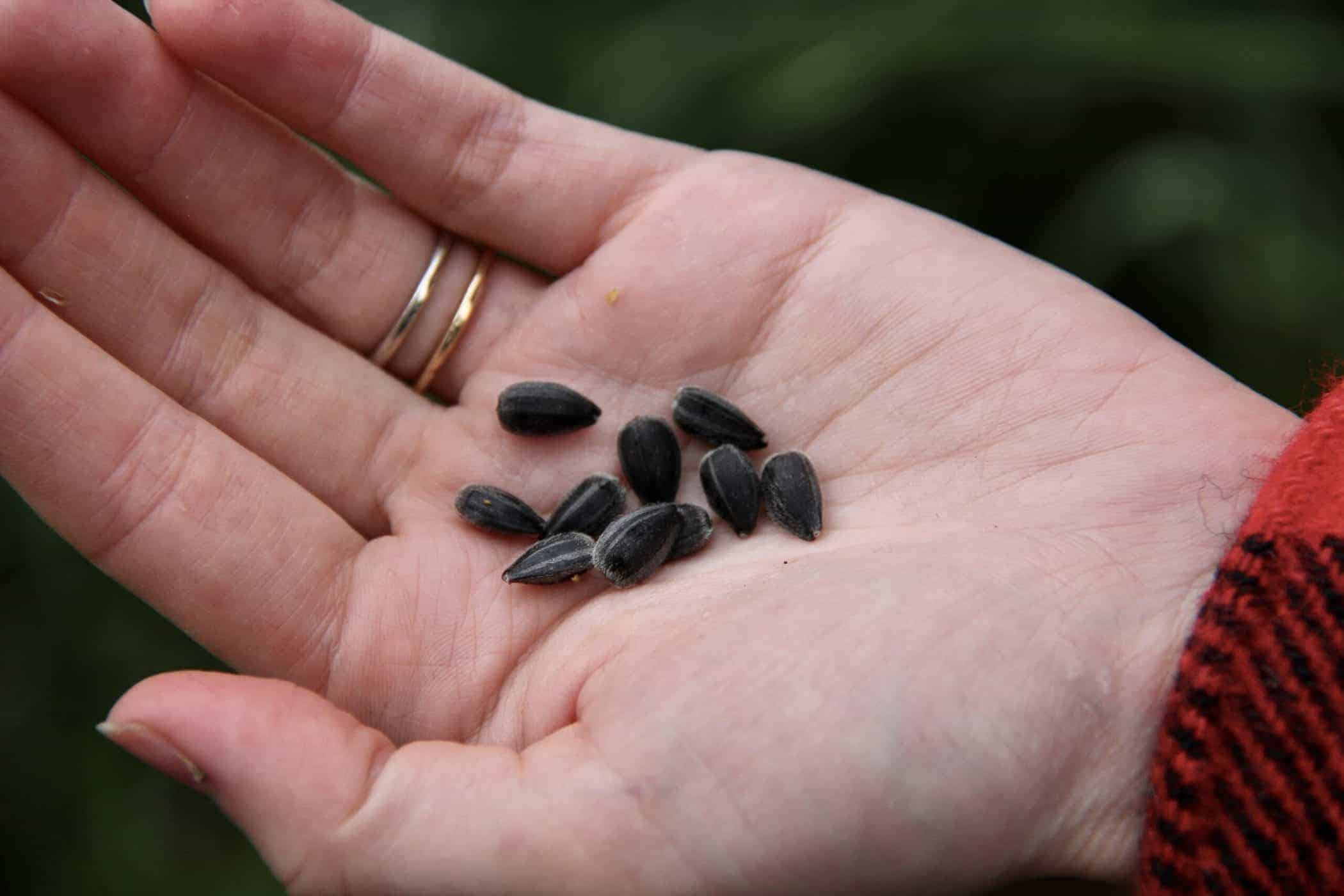
How to plant Black Oil sunflowers
Sunflowers aren’t particularly picky about their soil. If you have nice, well-draining loamy soil – that’s great – but you can also try to plant seeds in nutrient-poor soil, and they just might grow anyway!
Black Oil sunflowers do not need a lot of water from their gardeners. In fact, they only need one inch of water per week. If you live in a rainy area, then you will likely not have to water them at all and can just let nature take care of it. However, if you live in a particularly hot area, more water may be required. While drought-tolerant, they grow best when they aren’t limited by lack of water.
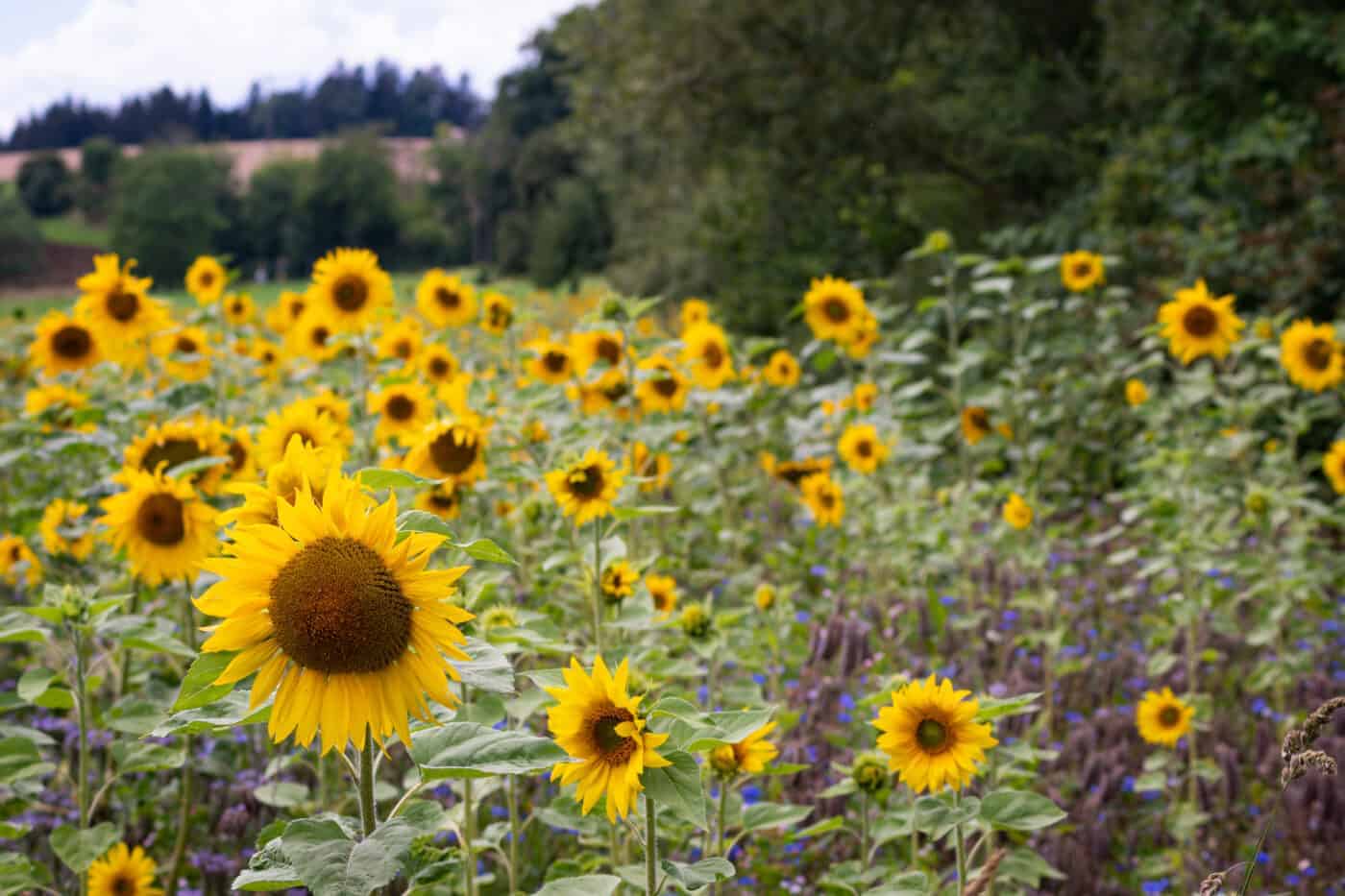
Sunflowers need a minimum of six hours of sunlight a day. They do better if they receive more than this, though, as this will help them be the best they can be. It’s right in the name; these blooms love the sun!


